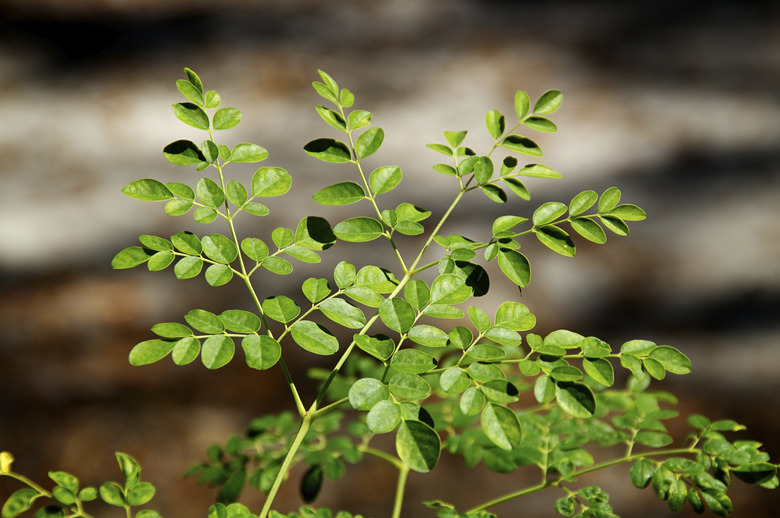How To Plant Malunggay
Sometimes called horseradish trees, malunggays (Moringa oleifera) are small deciduous trees grown for their ferny leaves, fragrant flowers and slender, edible seed pods. They thrive on neglect and will withstand drought and heat with minimal damage.
Sometimes called horseradish trees, malunggays (Moringa oleifera) are small deciduous trees grown for their ferny leaves, fragrant flowers and slender, edible seed pods. They thrive on neglect and will withstand drought and heat with minimal damage. But you must plant them correctly and provide them with routine care early on to help ensure their long-term health.
Site Selection
Malunggay trees adapt easily to many different growing conditions. Full sun and well-drained soil with a pH around 7.0 provide the best conditions for growth, but they will tolerate light shade and clay-based or sandy soil with a pH between 4.5 and 9.0. Avoid sites where water pools and is slow to drain away after rain, as well as those with rocky soil because it may impede drainage. Soil amendment is not necessary and should be avoided because it may prevent the roots from spreading out beyond the amended area. Weed the area and remove any large pieces of debris to improve drainage.
Timing Matters
Malunggay trees grow best in warm, frost-free climates within U.S. Department of Agriculture plant hardiness zones 10a through 11. Cold impacts their growth and makes root establishment slow. Spring and fall are the best times to plant malunggay trees, although it varies by climate. Autumn planting is best in Mediterranean climates with mild, wet winters and hot, dry summers, while spring planting is best in subtropical areas with warm, rainy summers and moderate winter temperatures. Wait until after the first autumn rain to plant or until after the soil warms to 70 degrees Fahrenheit in spring. No matter the location, avoid planting during the heat of summer because young malunggay trees may dry out and die.
Spacing and Planting
At a mature height of 15 to 20 feet with a 10-foot spread, malunggay trees are relatively small and tidy. They still need space to spread out and establish a productive root system so they can better survive drought, heat and other stressful conditions. Space multiple trees at least 8 to 10 feet apart. In areas with heavy soil, plant them shallowly with the top of their root ball is slightly above the surrounding soil so excess water will drain away. Spread a 3-inch-thick layer of mulch in a 3-foot radius around the base of the tree after planting to discourage weeds and keep the soil warm and moist.
Aftercare Tips
Malunggay trees require little care after planting apart from routine watering, weeding and mulching. Fertilizer is not required if the trees are planted in organically rich soil. Water the young trees each week to a depth of 1 inch, and stop watering during rainy or cold weather. Weeds will compete with malunggay trees and steal their nutrients, so the bed must be weeded regularly to prevent competition. Keep the base of the tree mulched with a 3- to 4-inch layer of wood chips or shredded bark and replace it each spring to keep insect pests at bay.
